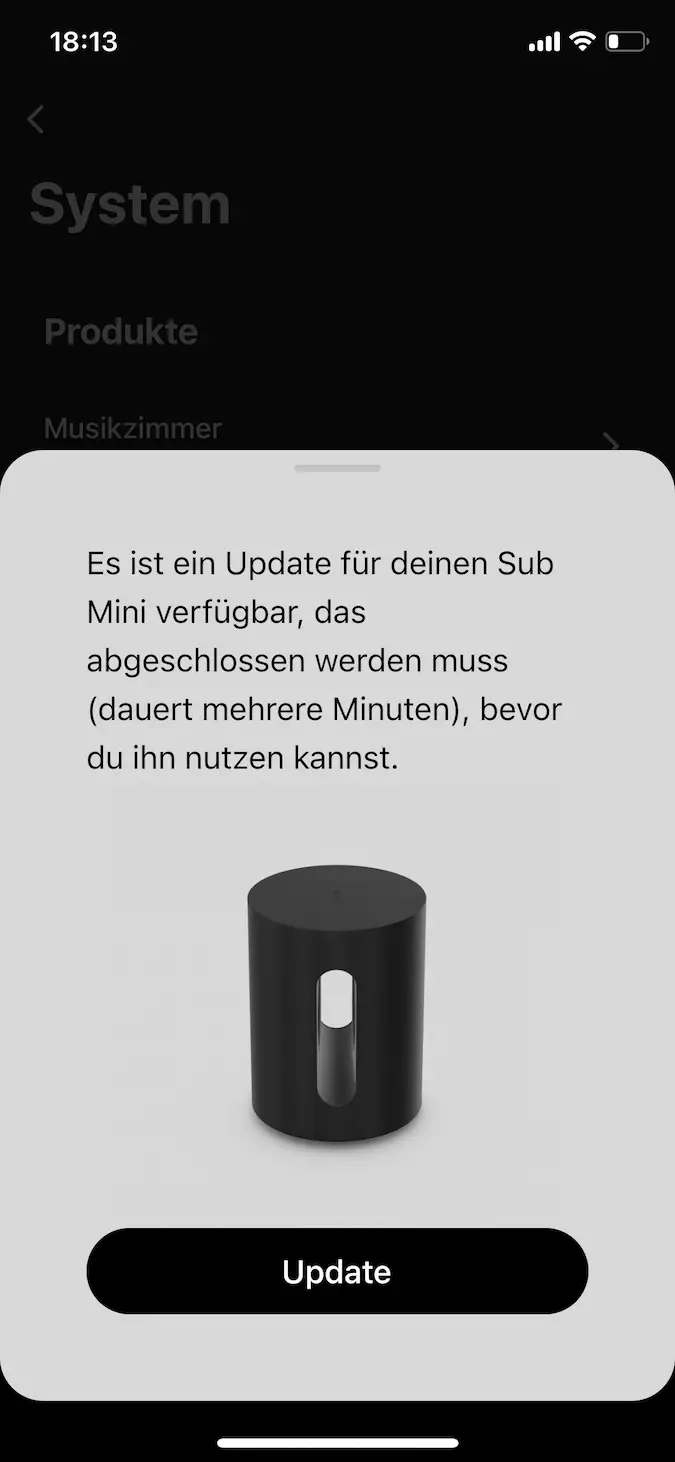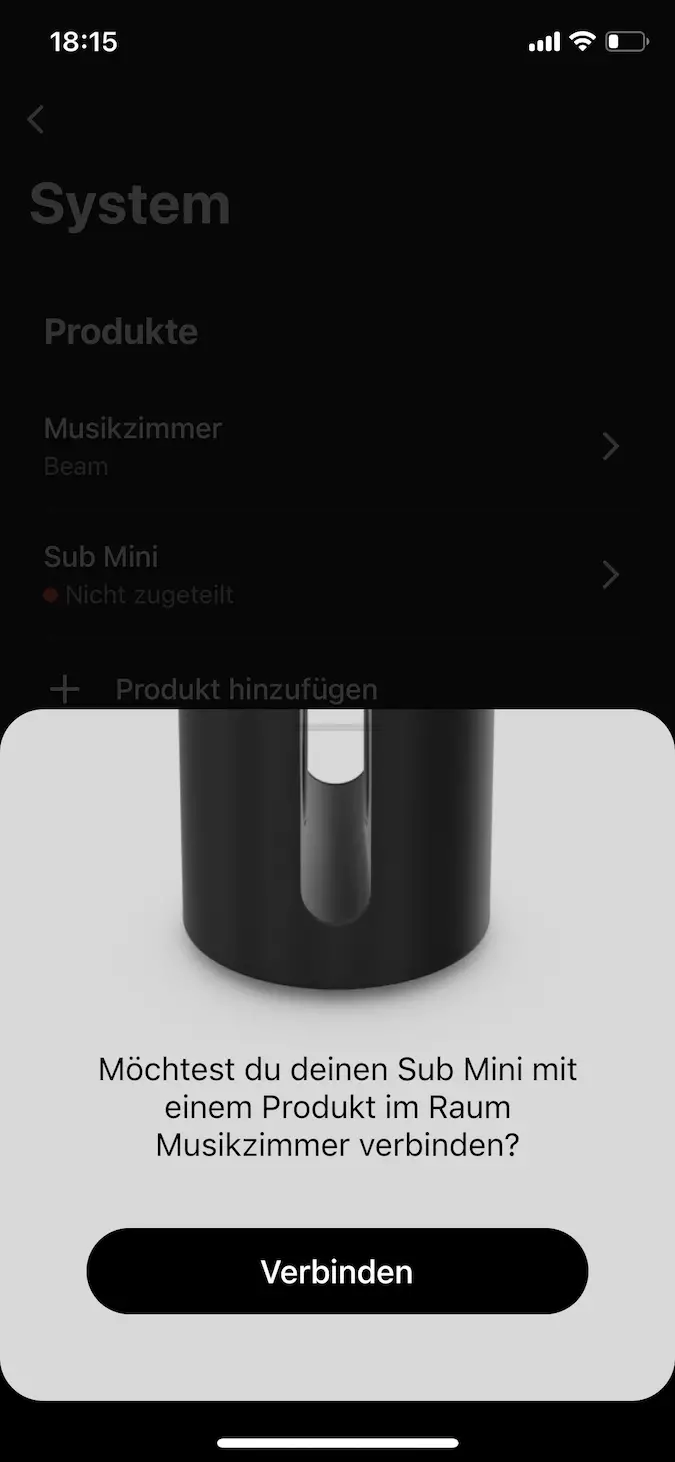Sonos Sub Mini review
The Sonos Sub Mini is based on the needs of the ever-growing fan base of the American streaming hi-fi pioneers. Compact soundbar plus wireless subwoofer – this combo is popular with TV fans. Until now, there was a gap in the multi-room system of the market leader Sonos. There are two compact sound supplements for the TV: The Sonos Ray and the Sonos Beam 2, which we recently gave a very good review. However, they are rarely combined with the big Sonos Sub, because neither the price structure nor the design and size ratios really match.
Sonos has also recognized the gap, and launches the brand new Sonos Sub Mini on the market. It costs as much as a Beam 2 or a pair of Sonos One. This makes it suitable as a bass supplement for all smaller Sonos speakers. It cannot be connected to the Move and Roam mobile models, nor can it be combined with prehistoric Sonos models that only run on the S1 app. However, it works with all IKEA Symfonisk speakers as well as passive compact speakers that are powered by a Sonos amp.
We think: With the black or white matte finish and the round, inconspicuous basic shape, it fits best with the Sonos Beam 2. In exactly this combination, we chose to review it. If you want to bring a sophisticated home theater setup into your living room, you can additionally integrate a couple of Sonos One as rear speakers. All wireless, of course. However, like all stationary Sonos components, the Sub Mini for all cases also has an Ethernet port for network cables – discreetly hidden on the bottom of the sturdy plastic case. A setup with two Sub Mini is not intended.
Technology and perfect design
When it comes to integrating a subwoofer inconspicuously into the living room, Sonos has probably reinvented the genre with the Sub Mini: The monolithic, round housing with a matte finish remains inconspicuous. Even if it is not abused as a flower coaster. The cutouts on the left and right give the optical impression even more lightness than the already compact dimensions would suggest. In diameter, the roundel measures just 23 centimeters and rises 30 centimeters in height. The direction in which the openings are turned is acoustically irrelevant.
The two narrow windows are of course not a design gag, but transport the bass waves to the surrounding air. In the narrow gap sit two bass drivers each of a hard, almost flat membrane of 15 centimeters in diameter. They work in the opposite direction, which virtually eliminates the transmission of vibrations on the compact housing. This is all the more important since the manufacturer promises a bass response of 25 Hz and uses a closed volume behind the drivers. This inevitably leads to higher strokes and would otherwise make a conventional subwoofer of these dimensions shake and wander. The manufacturer is silent about the exact performance of the installed Class D amplifiers. Experience has shown that this value is only really decisive in the very lowest octave of a closed subwoofer.

Comfort and features as known from Sonos
The fact that the Sonos Sub Mini can only be integrated wirelessly by combining it with other Sonos speakers via its own app follows the logic of this sophisticated multi-room system. Like all speakers with the latest generation of processors, the S2 generation Sonos app is mandatory.
Leveling and selection of crossover frequencies, as usual with conventional woofers, are handled automatically by the system. The selection of the tone control in the app is also included in the calculation. Likewise, the playback can be optimized for the room by calibrating via the Trueplay function in the app. However, an iPhone is required once for this.
Rarely has subwoofer sound been so easy to set up
The app connection of the Sonos Beam 2 with the Sonos Sub Mini is smooth and fast. Sonos users can conveniently save themselves the headache of level adjustment or choosing the right crossover frequency between subwoofer and soundbar. The setup is similar to the procedure known from other Sonos components. You then just have to assign it to the same listening zone as the Beam 2 or another Sonos soundbar or speaker. After that, you will automatically receive the pairing request in the app. After that, you can calibrate the whole thing with Trueplay, if you have an iPhone or iPad. That’s it. It doesn’t get any more convenient than this.
The control, connection options and operation of the sub/bar set correspond to the operation of the Sonos Beam 2 in standalone mode. We have already tested it here and described all functions in detail. Users can adjust the subwoofer level separately from the soundbar’s sound control via a slider in the Sonos S2 app. However, boosting only really makes sense for movies with fat sound effects or as a boost for electronic beats. Lowering is basically only necessary at night. If you know your way around a bit better, you can also adjust the phase position of the subwoofer in two steps (0° and 180°) to the satellites and the soundbar, respectively, in a menu.



How the Sonos Beam 2 sounds with the Sonos Sub Mini
The new Sonos Sub Mini shows what it can do in the review as an extension to the Beam 2. The subwoofer makes itself surprisingly subtly noticeable. You have to have a certain listening experience to be able to grasp the effect properly. Those who just expect more bass in the sense of effects or party beats might be a bit disappointed at first. On the other hand, those who prefer quality over quantity will definitely like the pair.
Like all Sonos speakers, the Beam 2 produces an enormously rich bass for its size thanks to active technology dynamic loudness. Of course, thanks to physical limitations, this comes at the expense of precision for all the impression it can make. And the small soundbar doesn’t really reach the very low frequencies. Nevertheless, it puts on a spectacle that is quite sufficient for normal users, especially in small and medium-sized rooms, and in multi-family houses in general.
Subtle perfection
Adding the Sub Mini can best be thought of in much the same way as the effect of Trueplay calibration. The bass gains in contour and precision. In addition, there is a minimal gain in bass, but this is especially noticeable at higher volumes. Furthermore, an effect occurs that we could even observe again and again in large floorstanders with much, much larger woofers than in the dainty Sonos Beam 2: The bass support from the perfectly matched subwoofer not only makes the bass seem more commanding. The transparency in the midrange, which is important for speech intelligibility, and the impression of spaciousness also increase due to the additional active bass module.
Even works on small distances to the listener
All of this is really nice, especially since the Sonos Sub Mini cannot be located even at a short listening distance. This positive circumstance also makes it very suitable for demanding gamers who want to upgrade their desktop. However, this design in combination with the surprisingly subtle bass boost also led me to put my hand in the air gap between the two counter-rotating diaphragms several times during the listening test to convince myself that the Sub Mini was running at all.
The Sub Mini is most noticeable in combination with the already amazingly bass-strong Sonos Beam 2 when you listen to action movies with heavy special effects very loudly. The subwoofer level can be adjusted to increase the level without overtaxing the soundbar’s smaller membranes. The Sub Mini is least noticeable when listening to music at a moderate level.
Conclusion and alternatives to the Sonos Sub Mini
For Sonos users, the search for alternatives is quite simple. Since none of the Sonos speakers or soundbars have an analog subwoofer output and the enthusiasm for third-party solutions is likely to be very limited within the fan community anyway, there is only one alternative to the Sub Mini within the proprietary network audio system: The larger Sonos Sub, which only makes sense if you have a large room and can turn up the volume.
For everyone else, the new Sub Mini is a good and reasonably priced solution, especially in combination with a pair of Sonos One, IKEA Symfonisk or the two small soundbars Beam 2 and Ray. The latter should benefit the most from the Sub Mini due to its small dimensions – bass needs the largest possible drivers and enclosures. This would also be an appealing and living space friendly solution for music fans. On the other hand, the small subwoofer would not make sense for the large Sonos Five, which we have already tested at STEREO GUIDE.
Specifications Sonos Sub Mini / Beam 2
- Manufacturer’s Suggested Retail Price: 500 Euro (Beam 2) + 500 Euro (Sub Mini)
- Dimensions subwoofer (D x H): 23 x 30.5 cm
- Weight subwoofer: 6.4 kg
- Features: LAN, WLAN, Sonos S2 app compatible, Trueplay calibration (iPhone only)
- More at www.sonos.com
For links on this page STEREO GUIDE may receive a commission from the merchant. This applies, for example, to those marked with *.
Der Beitrag Sonos Sub Mini review erschien zuerst auf stereoguide.com.
stereoguide-referencehometheater-techradar